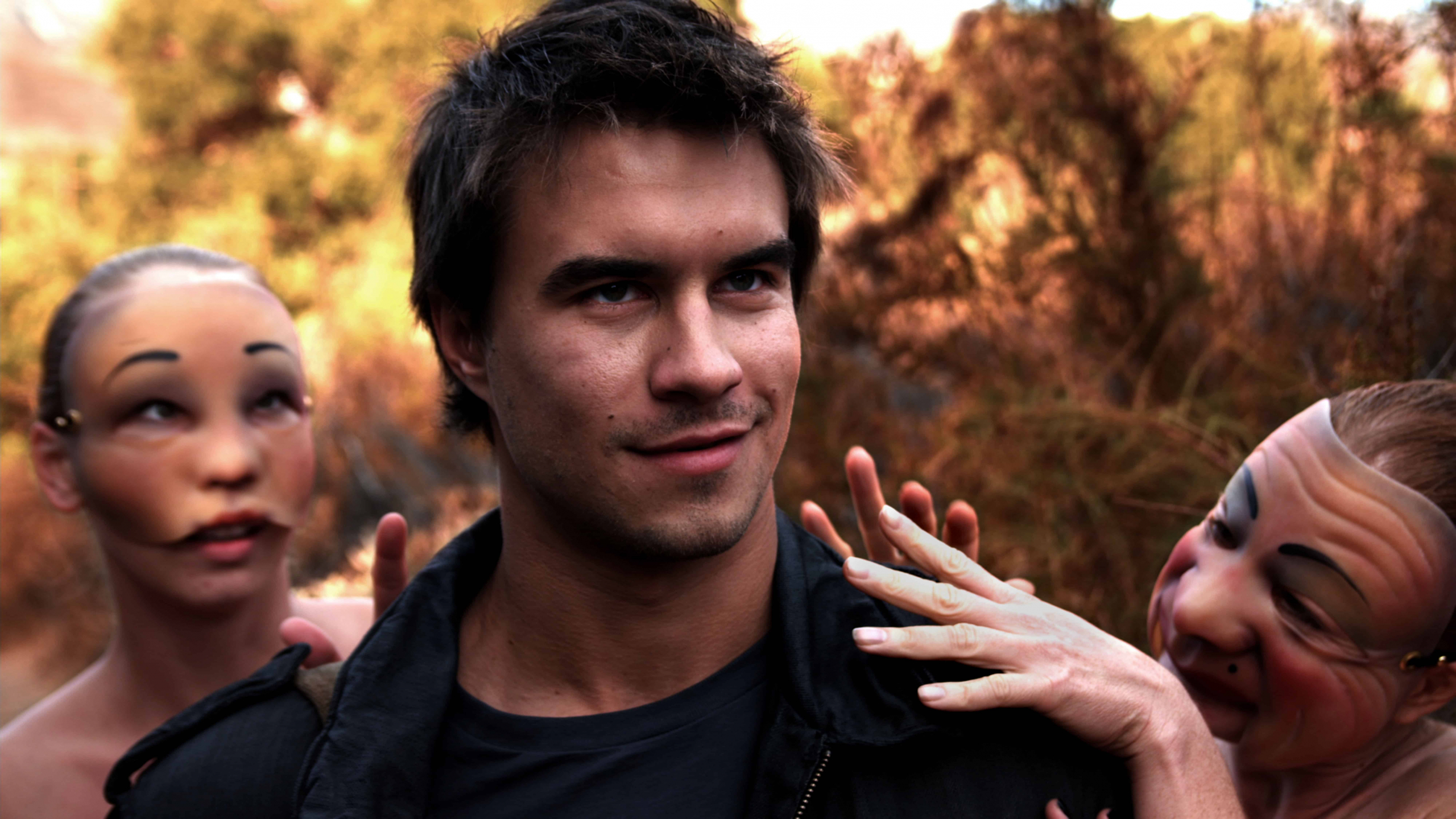John Dies at the End is the latest outing by long-dormant cult hero Don Coscarelli, and it’s both exactly what you would expect and something joyously inexplicable. The Phantasm (1979) and Bubba Ho-Tep (2002) writer/director returns with a heady adaptation of the small-press novel of the same name, reworking his favourite horror tropes — possession, re-animation, and cross-dimensional travel — and filtering them through a nerdy, referential, and dark humour.
The narrative centres around two friends, Dave and John, who accidentally acquire psychic abilities from a sentient designer drug called “soy sauce,” and find themselves entangled in a labyrinthine and basically indescribable sci-fi plot. The first two-thirds of the film somehow strike a balance between cartoonish monster scares and gonzo philosophizing, while managing a genuinely spooky apocalyptic foreboding. Soy sauce allows the characters to see forward and backward in time, which facilitates a number of surreal gags — like Dave talking to his dead friend through a bratwurst as though it were a cell phone — but also produces an air of fatalism worthy of an H. P. Lovecraft story.
Coscarelli employs a below-the-line cast of great character actors, including Angus Scrimm from the Phantasm movies, frequent Guillermo Del Toro collaborator Doug Jones, and Academy Award nominee and actual celebrity Paul Giamatti, who also executive produced the film as a labour of love. The performances are spirited and playful, creating an exuberant feeling throughout. As is the case with all of the best exploitation films, the cast of John Dies at the End seems truly excited to be involved in the production.
Unfortunately the exhilarating B-movie momentum diminishes around the beginning of the third act, when Dave and Jim cross over into an alternate reality that’s overwhelmed by exposition and bogus-looking CGI creatures and landscapes. Coscarelli forgets that the biggest pleasures of his previous films largely resided in their suspension of logic and their reliance on inventive practical effects and spooky art direction. Here he jettisons the fever dream atmospherics that make Phantasm so indelibly creepy (despite its nonsense plot and goofball protagonists), and opts for a style that is too on-the-nose and way beyond his modest financial means.
Nonetheless, John Dies at the End is refreshingly imaginative throughout, and its biggest fault is its lack of creative restraint despite a miniscule budget — the exact inverse problem of most high-profile genre cinema to come out of the early 2000s. Coscarelli continues to be the pre-eminent high-concept humorist of American horror genre movies, rivalled only by Joss Whedon and Sam Raimi. Let’s just hope he doesn’t wait 10 more years before his next effort.


